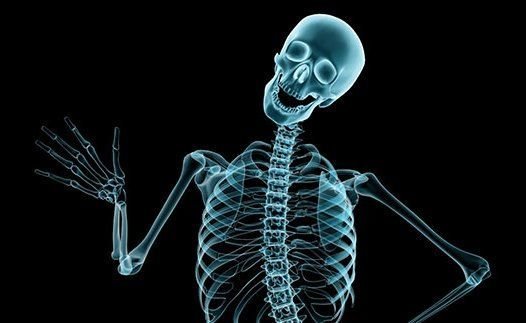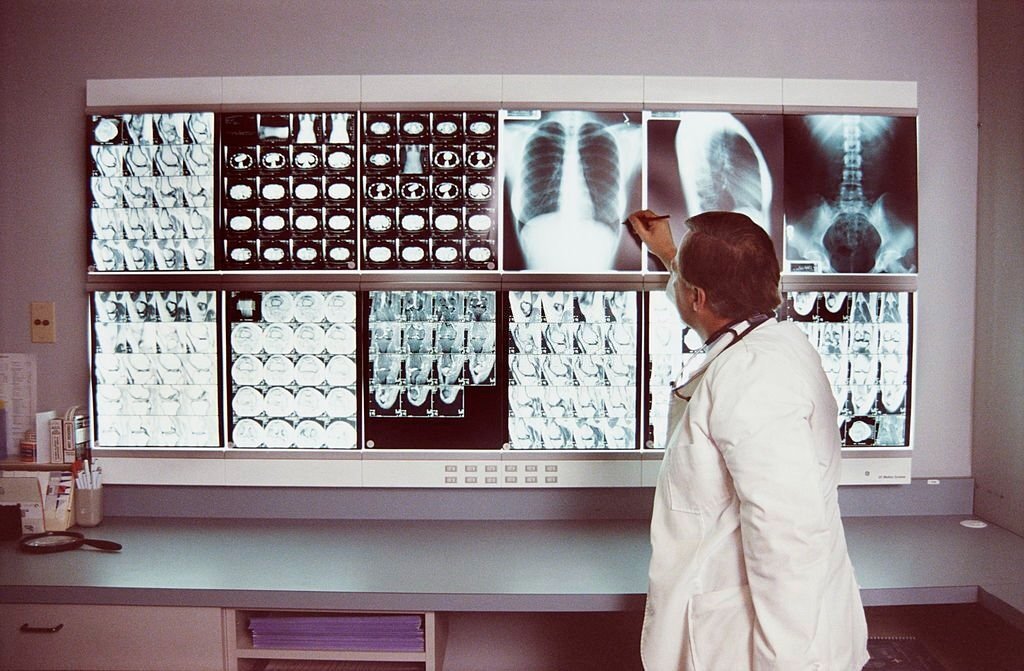Introduction
Radiation, also known as electromagnetic energy, is a form of energy that travels in the form of waves or particles. In the field of medicine, radiation is utilized for both diagnostic and therapeutic purposes. There are several types of radiation used in medicine, each with its own specific applications and benefits.
X-Rays
X-rays, or الأشعة السينية, are a commonly used form of radiation in medical imaging. They are used to produce two-dimensional images of bones and soft tissues. X-rays are particularly useful in diagnosing fractures, bone deformities, spinal alignment issues, swellings, tumors, and inflammations. By capturing images of the internal structures of the body, x-rays provide valuable insights for medical professionals in identifying and treating various conditions.
Computed Tomography (CT) Scan
The Computed Tomography (CT) scan, or التصوير بالتصوير المقطعي بالأشعة المقطعية, is a powerful imaging device that uses a series of circular x-rays to produce three-dimensional images of internal tissues. This technology enables medical professionals to visualize the body’s structures in greater detail. CT scans are commonly used to detect tumors, deformities, fibrosis, fluid accumulations, brain injuries, and aid in surgical planning. With its ability to provide cross-sectional images, CT scans offer valuable information for accurate diagnosis and treatment planning.
Magnetic Resonance Imaging (MRI)
Magnetic Resonance Imaging (MRI), or التصوير بالرنين المغناطيسي, utilizes a strong magnetic field and radio waves to produce detailed three-dimensional images of internal tissues. Unlike x-rays and CT scans, MRI does not involve the use of ionizing radiation. This makes it a safer option for certain individuals, such as pregnant women and children. MRI is commonly used to detect tumors, structural deformities, fibrosis, fluid accumulations, as well as neurological and vascular diseases. The detailed images provided by MRI assist medical professionals in accurate diagnosis and treatment planning.
Ultraviolet Radiation
Ultraviolet (UV) radiation, or الأشعة فوق البنفسجية, is a form of radiation that is used in the treatment of certain skin conditions. UV radiation therapy has been found to be effective in managing conditions such as psoriasis, eczema, and vitiligo. The controlled exposure to UV radiation helps alleviate symptoms and improve the overall condition of the skin. However, it is important to note that UV radiation should only be administered under the supervision of specialized medical professionals to ensure safety and effectiveness.
Nuclear Radiation
Nuclear radiation, or الأشعة النووية, is another type of radiation used in medicine. It is primarily employed in imaging internal organs, assessing organ function, and treating certain types of tumors. Nuclear imaging techniques, such as positron emission tomography (PET) scans and gamma camera imaging, utilize radioactive substances to capture images of specific body functions and identify abnormalities. In radiation therapy, nuclear radiation is used to target and destroy cancer cells. The use of nuclear radiation in medicine requires strict adherence to established guidelines and regulations to ensure safety and effectiveness.
Conclusion
Radiation plays a crucial role in the field of medicine, both for diagnostic purposes and therapeutic interventions. From x-rays and CT scans to MRI and UV radiation, each type of radiation offers unique benefits in terms of imaging and treatment. However, it is important to emphasize that the use of radiation should always be supervised by specialized medical professionals and conducted in accordance with established guidelines and regulations. This ensures the safety and effectiveness of radiation-based procedures, ultimately benefiting patients and improving healthcare outcomes.
some more information about radiation in the medical field:
- Positron Emission Tomography (PET) Scan (التصوير بالانبعاث الإيجابي): PET scans involve the use of radioactive substances known as radiotracers. These substances are injected into the body and emit positrons, which are detected by the PET scanner. PET scans are used to visualize physiological processes and metabolic activity in organs and tissues. They are particularly useful in cancer diagnosis, staging, and monitoring treatment response.
- Radiation Therapy (علاج الإشعاع): Radiation therapy, also known as radiotherapy, is a treatment modality that uses high-energy radiation to destroy or shrink cancer cells. It is often used in conjunction with surgery and chemotherapy. The radiation damages the DNA within cancer cells, preventing them from dividing and growing. The goal is to target and destroy cancer cells while minimizing damage to surrounding healthy tissues.
- Interventional Radiology (التصوير الشعاعي التدخلي): Interventional radiology is a specialized field that uses imaging guidance, such as X-rays or fluoroscopy, to perform minimally invasive procedures. These procedures can include angiography, embolization, stent placement, tumor ablation, and drainage of fluid collections. Interventional radiology techniques allow for precise targeting of specific areas within the body, reducing the need for open surgery and promoting faster recovery.
- Radiation Safety (سلامة الإشعاع): When using radiation in medical procedures, safety measures are of utmost importance. Medical professionals follow strict protocols to ensure the safe use of radiation, including proper shielding, monitoring radiation exposure, and adhering to regulatory guidelines. The aim is to minimize the risks associated with radiation exposure for both patients and healthcare providers.
- Ongoing Advancements: The field of medical radiation continues to evolve with advancements in technology and techniques. New imaging modalities, such as molecular imaging and 3D reconstruction, are being developed to improve diagnostic accuracy. Additionally, radiation therapy techniques are becoming more precise and targeted, minimizing side effects and improving treatment outcomes.
It’s important to note that the use of radiation in medicine should always be under the guidance and supervision of trained healthcare professionals. They will determine the appropriate use of radiation based on the patient’s condition and the potential benefits outweighing the risks.

- Radiation Safety Measures: In medical settings, strict safety measures are employed to protect patients, healthcare providers, and the general public from unnecessary exposure to radiation. These measures include using lead shielding, such as lead aprons and thyroid collars, to minimize radiation exposure to non-target areas. Additionally, monitoring devices, such as dosimeters, are used to track and measure radiation doses received by individuals.
- Radiation Dose Optimization: Medical professionals strive to optimize radiation doses to achieve the desired diagnostic or therapeutic outcome while minimizing potential risks. For diagnostic procedures, imaging protocols are designed to use the lowest possible radiation dose that still provides sufficient image quality. Similarly, in radiation therapy, treatment plans are carefully tailored to deliver an effective dose to the tumor while sparing surrounding healthy tissues.
- Radiation Oncology: Radiation oncology is a specialized field that focuses on the use of radiation therapy to treat cancer. Radiation oncologists work closely with other members of the cancer care team, such as surgeons and medical oncologists, to develop comprehensive treatment plans. They consider factors such as tumor type, stage, location, and the patient’s overall health to determine the optimal radiation therapy approach.
- Radiopharmaceuticals: Radiopharmaceuticals are radioactive substances that are used in nuclear medicine procedures. These substances are typically injected, inhaled, or swallowed, and they emit radiation that can be detected by specialized imaging devices. Radiopharmaceuticals are used for a variety of purposes, including diagnosing and staging diseases, assessing organ function, and targeting specific tissues or cells for therapy.
- Radiation Research and Innovation: Ongoing research and technological advancements continue to enhance the field of medical radiation. New imaging techniques, such as molecular imaging and hybrid imaging systems, allow for improved visualization of diseases at a cellular and molecular level. Advanced radiation therapy techniques, such as intensity-modulated radiation therapy (IMRT) and stereotactic radiosurgery (SRS), enable more precise and targeted delivery of radiation, resulting in better treatment outcomes and reduced side effects.
- Radiation Safety Organizations and Regulations: Numerous national and international organizations are dedicated to ensuring radiation safety in the medical field. These organizations, such as the International Atomic Energy Agency (IAEA) and the Nuclear Regulatory Commission (NRC), establish guidelines, regulations, and standards to govern the use of radiation in medical practices. Healthcare facilities and professionals adhere to these regulations to maintain a safe environment for patients and staff.

- Radiation Imaging Modalities: In addition to X-rays, CT scans, MRI, and PET scans, there are other imaging modalities that utilize radiation. For example, mammography uses low-dose X-rays to image the breast and detect early signs of breast cancer. Fluoroscopy involves real-time X-ray imaging that helps guide procedures such as angiography and gastrointestinal studies.
- Radiation Therapy Techniques: Radiation therapy has evolved to include various techniques that improve treatment precision and minimize side effects. Some of these techniques include:
- Intensity-Modulated Radiation Therapy (IMRT): This technique delivers radiation with varying intensities, allowing for precise targeting of the tumor while sparing surrounding healthy tissues.
- Image-Guided Radiation Therapy (IGRT): IGRT incorporates real-time imaging, such as CT or MRI, during treatment delivery to ensure accurate targeting of the tumor, especially when there are organ motion or changes in patient anatomy.
- Stereotactic Radiosurgery (SRS) and Stereotactic Body Radiation Therapy (SBRT): These techniques deliver high doses of radiation to small targets, such as brain tumors or lung tumors, in a few treatment sessions. They are highly precise and minimize radiation exposure to nearby healthy tissues.
- Radiation Safety and Protection: Medical professionals take several precautions to ensure radiation safety and protect both patients and healthcare providers. These measures include:
- Using appropriate shielding, such as lead aprons, gloves, and goggles, to minimize radiation exposure.
- Adhering to the principles of ALARA (As Low As Reasonably Achievable), which aims to minimize radiation doses while maintaining diagnostic or therapeutic efficacy.
- Implementing quality assurance programs to ensure accurate and reliable radiation delivery in both imaging and treatment procedures.
- Following strict protocols for handling and disposal of radioactive materials to prevent environmental contamination.
- Emerging Technologies: The field of medical radiation continues to advance with the introduction of new technologies. For example:
- Proton Therapy: Proton therapy utilizes protons instead of X-rays to deliver radiation. This technique allows for better targeting of tumors while reducing radiation exposure to healthy tissues, particularly in pediatric patients and certain types of cancers.
- Flash Radiotherapy: Flash radiotherapy is an experimental technique that delivers an ultra-high dose of radiation in an extremely short time, potentially reducing treatment time and minimizing side effects.
- Molecular Imaging: Molecular imaging combines nuclear medicine techniques with various imaging modalities to visualize specific molecular and cellular processes in the body. It has applications in cancer detection, neurology, cardiology, and other fields.
These advancements continue to enhance the effectiveness and safety of radiation-based medical procedures, improving patient outcomes and quality of care.

